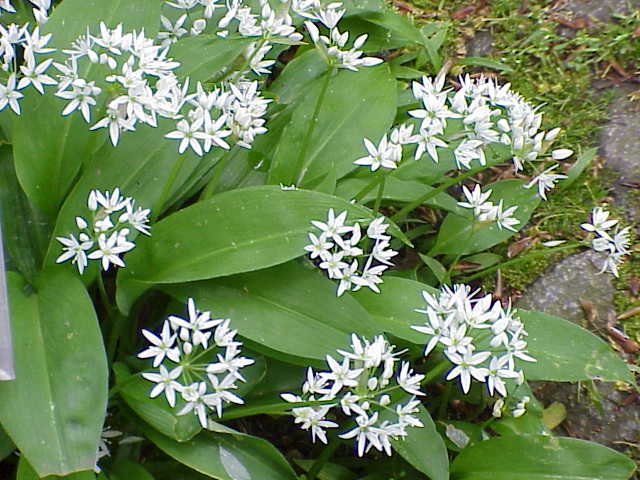Common Name:
Wild
Garlic
|
Latin Name: Allium
canadense (native Carolinian species), Allium ursinum (non-native)
|
 |
| Allium canadense |
|
 |
| Allium ursinum |
|
|
Brief Description:
Garlics are perennial plants growing from 30cm to 1m (approximately 18-24”
tall), with pale pink or green-white flowers. They produce dividing bulbs and sprout up into an upright, grass-like plant with a
pungent aroma. Some will produce small bulbils that form where they blossom.
Historically, garlics have been
used as a food and as a potent anti-biotic/anti-microbial.
|
Parts Used: Flowers,
leaves, root
|
Edible Uses: Vegetable
|
Medicinal Uses: Has
anti-microbial, cardio protective, and potentially anti-cancer properties,
decreases high cholesterol. Also used
traditionally to expel pinworms.
Wild Garlic also contains highly bio-available selenium, which is a
very powerful anti-oxidant. Wild garlic
also contains more active/medicinal components than cultivated garlic (it is
thought to be a more potent medicine than most cultivars).
|
Body System’s Treated:
Cardiovascular system, Digestive system, Respiratory system.
|
Other Uses: Repellant,
food
|
Harvesting Notes:
Look to cut individual leaves off the plant, or if the wild garlic
has blossomed, keep the flowers and leaves. Bulbs can be harvested anytime but are generally harvested when the bulbs have gone dormant at the end of the growing season.
|
Safety/Cautions/Interactions:
May cause gastro-intestinal upset.
Is generally well tolerated.
|
Sources:
Allium ursinum monograph:
Physica Energetics 9/10/12
The Complete Natural Guide to the 50 Most Common Medicinal Herbs
|
No comments:
Post a Comment